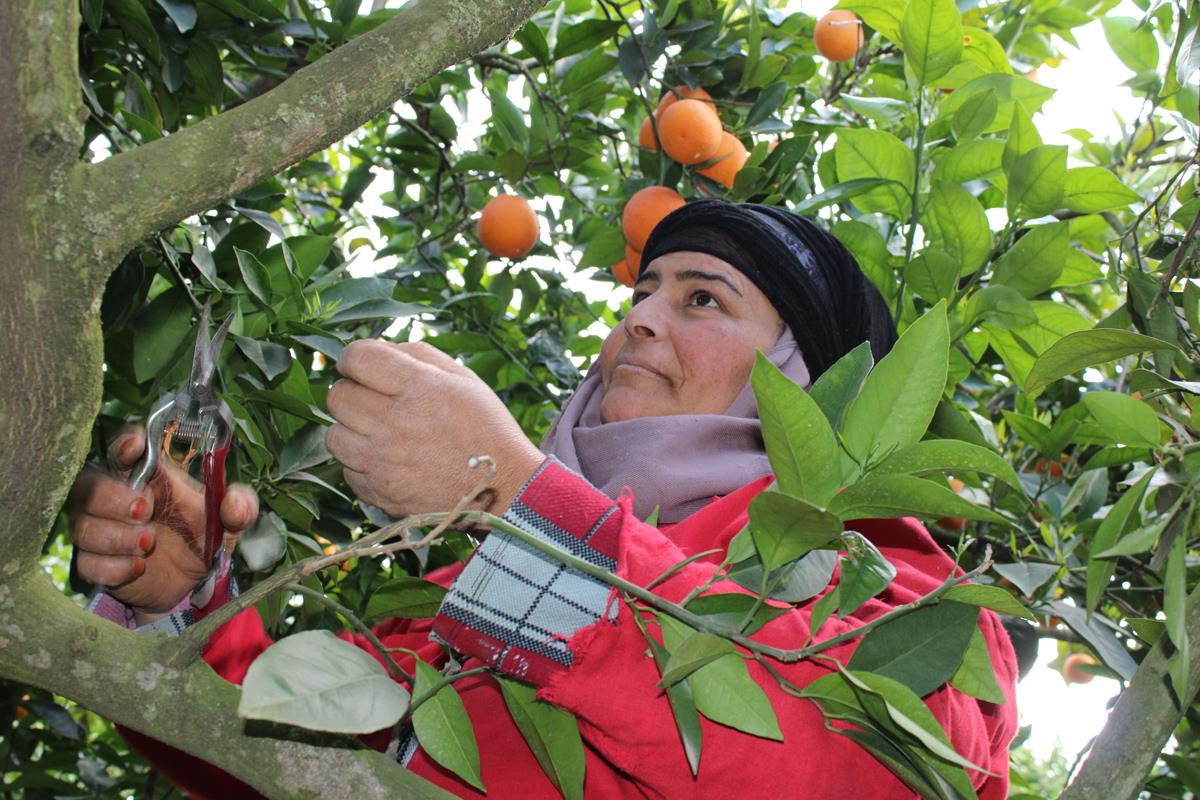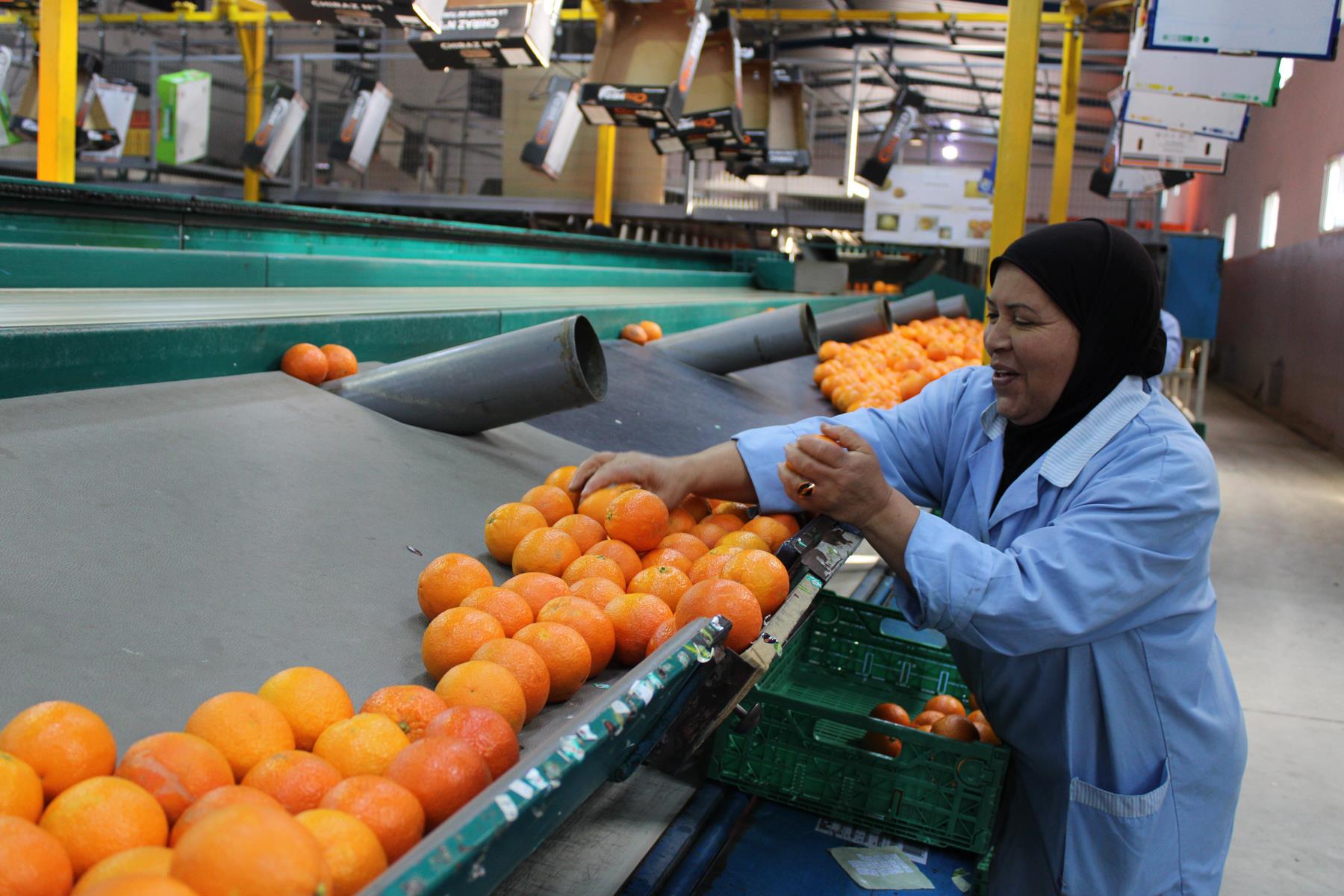
Tunisia’s “Queen of Oranges”
Ensuring the quality of one of the country’s most sought-after oranges
Feria harvests the “Queen of Oranges”, more commonly known as the Maltese orange, in the orchards of Cap-Bon, Tunisia. ©FAO/Souha Yacoub
13/01/2022
The Maltese orange, what Tunisian locals call the “Queen of Oranges”, certainly originated in Asia, but few agree on how it arrived in Tunisia. Some say it was introduced from Spain at the beginning of the 17th century. But this doesn’t explain the appellation…
Malta lies just 284 kilometers from modern Tunisia – so the orange might have been introduced directly from here. The fruit was certainly cultivated on the Mediterranean island in the 9th century.
In any case, the fruit became known as the ‘Maltese orange’ about 250 years ago and was celebrated in cookbooks, even inspiring the French sauce maltaise (a derivative sauce of Hollandaise sauce with Maltese orange juice and zest). Needless to say, the orange is highly praised in Europe and beyond.
Full of benefits
The Maltese orange belongs to the Rutaceae family. It resembles a half-blood orange and is cultivated most successfully today in northeastern Tunisia, specifically on the Cap-Bon peninsula, near the coast of Hammamet.
It is medium in size and slightly oval-shaped with an easy-to-remove peel. Inside, the flesh is tender and juicy. Its flavor is sweet and tart, making it unique. On the tree, its orange color may turn red if exposed to too much sun.
"It is tasty and full of health benefits, especially in these times of crisis," says Fehria, a timid, middle-aged farmer from Cap-Bon, as she cuts the stalks off oranges.
The harvesting of the Maltese orange is carried out by hand by local experts like Fehria and her colleagues.
Fehria has always worked in the agricultural sector. Picking the fruits and vegetables of her region is the main source of income for her and her family. She first collected potatoes and artichokes and only began harvesting citrus fruits four years ago. Today, the “Queen of Oranges” is her focus, and she is proud to be associated with a product so exalted.


The Cap-Bon region produces more than 75 percent of all citrus fruits in Tunisia. Harvesting products like the Maltese orange provides Fehria and her co-workers with a steady income. ©FAO/Souha Yacoub
Maltese in name, Tunisian in production
Home to around 25 000 people, Fehria’s town of Grombalia is a lively place located in Cap-Bon.
The air in Grombalia is perfumed by the scent of orange flowers in spring and the golden color of the fruits light up the landscape in winter, the season of their picking.
Although seasonal – from the end of December to the end of March – the picking activity provides Fehria, as well as her co-workers in nearby orchards, with a steady income and above all decent working conditions.
"Here in the orchard, surrounded by oranges, I am in my element. But what is most important to me is that my contribution is respected by my community and by my employer," says Fehria.
The orange groves of the Cap-Bon peninsula cover an area of approximately 14 000 hectares, where roughly half of the land is devoted to the production of the Maltese orange.
While the Queen of Oranges reigns in terms of exports – other local varieties, such as meski, châmi or Thomson, are also cultivated in the area.
The Cap-Bon region, which produces more than 75 percent of all citrus fruits in Tunisia, also sees the propagation of mandarin and lemon trees – all taking advantage of the rich and fertile soil and year-round sunshine.

Fehria ensures Maltese oranges conform to quality standards. This FAO project in Tunisia is building the capacity of food producers, quality control labs and local authorities to understand and meet the quality requirements needed for export. ©FAO/Souha Yacoub
Quality and safety ensured
Fehria’s boss is a producer of citrus fruits for the local market and for export. He also runs an adjoining packing station where he employs around 50 local people who wash, pack and ensure the Maltese oranges conform to quality standards.
FAO supports this packing station operation, as well as other production units, to register their fruit and vegetable production with the national information system. This system helps farmers register their products for quality control and helps authorities distribute the results and accompanying licenses through this platform. Its efficiency paves the way for easier exports of fruits and other agricultural products.
This is just one piece of FAO’s main activity here in Tunisia, a flagship project called Support for Official Control Services (ASCO) funded by the European Union. ASCO provides support to ensure the health of animal and plant products and aims to modernize the country’s agricultural sector through support along the value chain. This includes building the capacity of food producers, quality control labs and local authorities to understand and meet the quality requirements needed for export. Another important area of work is helping producers address and manage plant and animal diseases.
Partnerships with farming communities, local authorities and the private sector are important to keep these processes working well and to allow farmers to obtain a regular income. In short, FAO helps ensure that Tunisian people have remunerative livelihoods through products like the Maltese orange, products of which they can be proud and which stand international tests of quality.
Related links
Learn more
- Website: FAO Country Profile: Tunisia
- Website: International Year of Fruits and Vegetables

